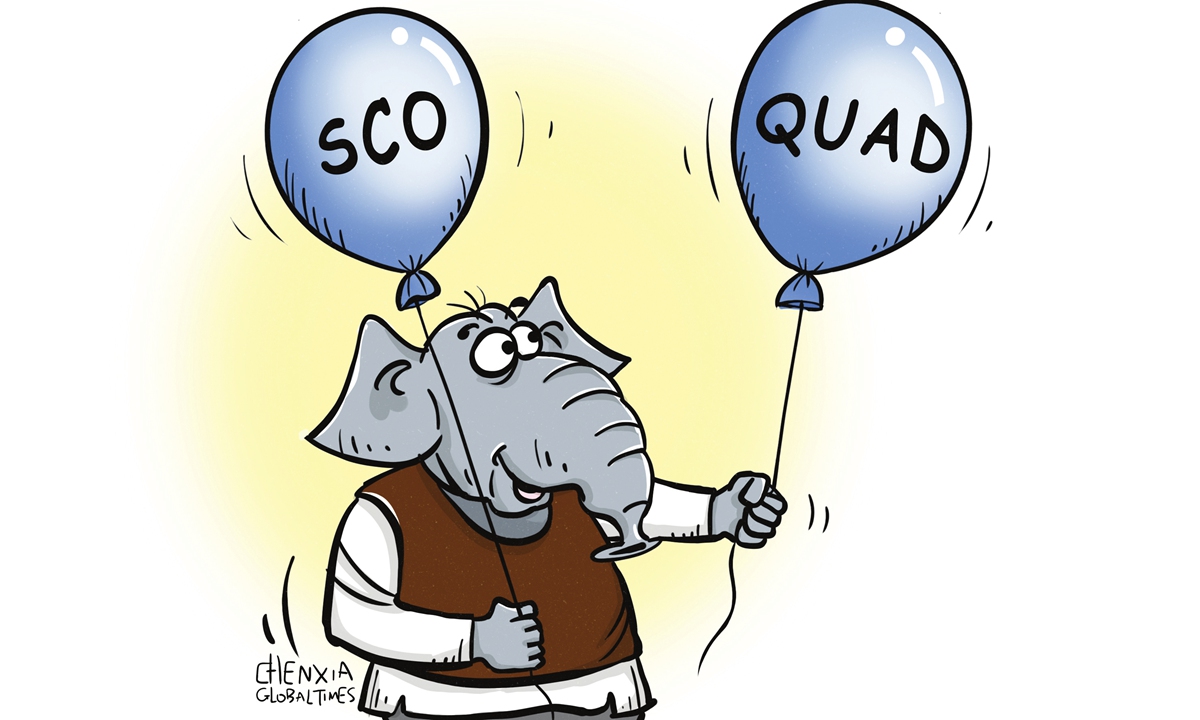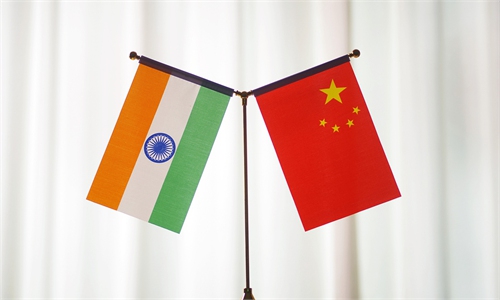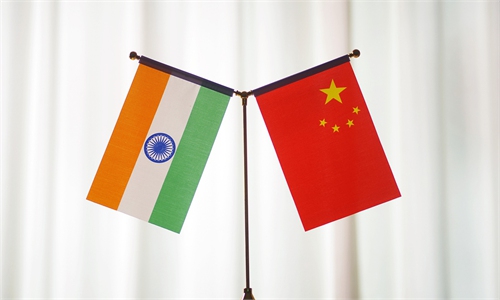
Illustration: Chen Xia/Global Times
India's policy of multi-alignment has been on full display throughout the past several weeks. In addition to India's prime minister attending a whole range of summit meetings, last week saw India's foreign minister Dr S Jaishankar attend dozens of meetings involving BRICS, as well as several other quadrilaterals, triangular and bilateral foreign ministers' meets on the sidelines of the 77th session of the UN General Assembly.
In this gradual shift of India's foreign policy — from traditional non-alignment towards multi-alignment involving building partnerships in across many sectors with as many countries as possible — the ongoing Ukraine crisis has been an acid test for India's efforts to carefully craft this complex balance between its engagement with Russia, China and other Eurasian nations on the one hand, while building close proximity with the United States. This method of "spreading thin," of course, has been criticized by some as a "hunting with hounds and running with hares" strategy yet what has sustained it is the fact that it represents India's essential civilizational character of seeking "unity in diversity" as acceptance grows of this genre of India's foreign policy. This, of course, has had its costs, and benefits.
This shift, however, has been in the making for some time with domestic dynamics having begun to a play larger role compared to exogenous structural factors and forces. Even if not yet a system shaping power like China, an emerging India aspires to be able to influence global dynamics using forums that enhance its ever growing leverage. The current leadership had come to power in 2014 on the slogan that India has been "punching way below its weight." This has since seen them repeatedly underline India's demographic and economic size in explaining this novel experiment at synergizing India's pursuit for protecting core national interests by utilizing India's ever expanding economic leverage.
The Indian economy grew by 13.5 percent for the first quarter of this financial year (April-June 2022) and reminded experts of China's exponential growth rates in the early 1990s. Whilst India is not able to completely follow China's growth trajectories in face of pandemic-driven global disruption and deceleration, India's emerging economy can nonetheless maximize outcomes by joining the correct forums.
This is what makes India's engagement with groupings like BRICS, G20 and the SCO critical for its peaceful rise, though it remains equally engaged with the US-led Quad in the Indo-Pacific, or the Middle East. Even within these primarily development-focused groupings, the US-led G20 has become increasingly vulnerable to divisive geopolitics, while both BRICS and SCO have been debating on expansion to co-opt new aspirant countries which promises to increase their writ and relevance. The fact that India will chair next year's SCO should help it balance its growing tilt towards the United States and its friends and allies' strategic initiatives.
What also makes India's participation in BRICS and the SCO so unique is that India is the only member that is also member of the US-led Quad and is regularly invited to G7 summits. This is where India aspires to bring to bear its sobering impact through bridge building of their overlaps and work to ensure that these two sets of groupings do not become preoccupied with mutual skepticism and counterproductive rivalries.
Some of that promise can also be seen in how, in spite of their bilateral differences on some of these issues, BRICS and SCO members have displayed consensus building capacity on a whole range of issues way beyond economic cooperation and financial restructuring. The media statement issued from New York foreign ministers BRICS meet last week for instance covers areas spanning multilateralism, terrorism, climate change, corruption and human rights. Indeed, it also saw foreign ministers of China and India both advocating need for reforming extant multilateralism which has become dated.
Indeed, what often gets overlooked is how India has steered clear from US-led regional security mechanisms like AUKUS and 5-Eyes, whilst has also begun distancing itself from IPEF, all whilst it has sustained its engagement with SCO and BRICS groupings where China stands tall as an inordinately large economy. In spite of border tensions, India's trade with China has remained ahead of its trade with the United States.
In the midst of the past seven months of the Ukraine crisis, India's presence in BRICS and the SCO has provided India an opportunity to assert its autonomy in toeing either the American or Russian line, while at the same time contribute to bringing moderation to their contrarian impulses. No doubt, India has refused to denounce Russian military action in Ukraine and also increased imports of Russian oil and other commodities,but India even today buys more oil from the United States and India-US trade stands much larger than that of India-Russia trade. What then explains Western anxieties on India's engagement with Russia and China? Emerging internal disjunctions of liberal order that undergirds the United States global leaders may perhaps reveal some answers.
The author is professor of diplomacy and disarmament at Jawaharlal Nehru University (New Delhi) and currently visiting professor with University of British Columbia (Vancouver, Canada). opinion@globaltimes.com.cn


